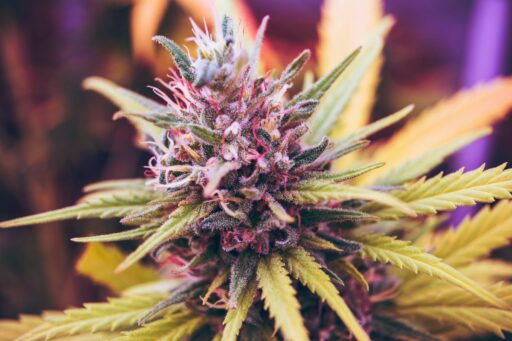The legalization of marijuana in New York has been a significant shift in both policy and practice, with far-reaching implications. This article delves into the multifaceted impact of this change, from social equity and economic dynamics to public safety and federal policy influences. We’ll explore how New York’s approach to legalization compares to other states, the challenges faced during the dispensary rollout, and the broader consequences for the state’s residents and the cannabis industry.
Key Takeaways
- New York’s marijuana legalization aimed to address social injustices, but the rollout has faced significant challenges, including legal disputes and unmet expectations.
- Economic projections for New York’s cannabis market are ambitious, yet early indicators suggest a lag behind other states, with legal hurdles impacting dispensary operations.
- Public safety remains a contentious issue, with concerns over cannabis-impaired driving and the adequacy of enforcement tools drawing regulatory attention.
- Federal policy changes could drastically alter New York’s cannabis industry, with descheduling potentially spurring investment and competition.
- Public perception and media influence continue to shape the cannabis landscape in New York, with resistance from anti-cannabis groups and industry developments under scrutiny.
Assessing the Social Equity Impact of Legalization

The Intentions Behind Legalizing Marijuana in New York
In 2021, New York took a historic step by legalizing recreational marijuana use for adults, with a clear intent to address social injustices. The legalization aimed to rectify the disproportionate impact of marijuana-related arrests on Black and brown communities, which has been a long-standing issue despite similar usage rates across racial and socioeconomic groups.
The rollout of legalization in New York has faced significant challenges, but it remains a pivotal move towards social equity and justice.
The state’s approach has been multifaceted, focusing on expunging past convictions, reinvesting in communities, and ensuring equitable access to the emerging market. Here’s a snapshot of the initiatives:
- Over 100,000 marijuana convictions expunged
- 40% of tax revenues from cannabis sales dedicated to community initiatives
- A goal to allocate 50% of all industry licenses to social and economic equity applicants
Additionally, the "Why Buy Legal New York" campaign was launched to encourage the purchase of cannabis from licensed dispensaries, highlighting the pillars of public health, social equity, and community reinvestment.
Arrest Disparities and the Pursuit of Justice
The legalization of marijuana in New York was heralded as a step towards rectifying the historical injustices associated with cannabis prohibition. Arrest disparities have long been a point of contention, with data showing that communities of color were disproportionately targeted. The pursuit of justice through legalization aimed to address these disparities and foster social equity.
However, the rollout of licenses has been met with legal challenges. A recent complaint highlights the tension between the intent of the law and its implementation:
- The law aimed to prioritize social and economic equity applicants, including those from communities impacted by cannabis enforcement, minority-owned businesses, women-owned businesses, and service-disabled veterans.
- Allegations have surfaced that the implementation favored certain groups over others, potentially violating the Equal Protection Clause of the United States Constitution.
- A temporary injunction by Justice Bryant suggests that the awarding of licenses may not have been in full compliance with the law.
The complexities of implementing social equity initiatives reveal the delicate balance between legal frameworks and the pursuit of justice. The upcoming hearing on September 15th may provide further clarity on how New York will navigate these challenges.
While the intent behind legalization was clear, the practical application has proven to be a complex endeavor. The state’s commitment to social equity will continue to be tested as it seeks to establish a fair and inclusive cannabis industry.
Evaluating the Progress of Social Equity Initiatives
New York’s legalization of marijuana came with a promise of social equity, aiming to rectify the injustices caused by the war on drugs. The state set an ambitious goal to award 50% of all adult-use licenses to Social and Economic Equity (SEE) applicants. This includes individuals from communities disproportionately impacted by cannabis prohibition, minority and women-owned businesses, distressed farmers, and service-disabled veteran-owned businesses.
However, the implementation of these initiatives has faced challenges. The Office of Cannabis Management (OCM) has been criticized for prioritizing applicants with cannabis convictions or their family members, potentially sidelining other groups that the legislation intended to benefit. The process has proven so frustrating that some social equity applicants are looking to sell their licenses, often to large cannabis companies.
The pursuit of social equity in the cannabis industry is a complex endeavor, requiring careful balancing of legislative intentions and practical outcomes.
Despite these hurdles, requirements such as participation in a social equity mentorship program and engagement in labor peace agreements signal a commitment to sustainable and equitable industry practices. As the market evolves, continuous evaluation and adjustment of these initiatives will be crucial to ensure they fulfill their intended purpose.
Economic and Market Dynamics Post-Legalization

Comparative Analysis of New York’s Cannabis Market
New York’s cannabis market has been under the microscope since its inception, with various stakeholders keen on understanding its dynamics in comparison to other states. The Travel Agency‘s comprehensive data analysis offers a fresh perspective on the New York cannabis consumer. This includes consumption preferences and purchase patterns, shedding light on the market’s unique characteristics.
When comparing New York to states that legalized cannabis in 2019 or later, we observe significant differences. For instance, New York’s legal cannabis sales this year amounted to $22.6 million, a figure that speaks volumes about the market’s current state. However, the rollout of dispensaries has faced challenges, with lawsuits and regulatory hurdles creating what some might call ‘speed bumps’ in the process.
New York’s cannabis market is still in its infancy, and while it shows promise, there are clear areas where improvements are necessary to meet the state’s expectations and the needs of consumers.
The table below provides a snapshot of New York’s market in relation to other recently legalized states:
| State | Year Legalized | Total Sales This Year (in millions) |
|---|---|---|
| New York | 2021 | $22.6 |
| State B | 2019 | $XX.X |
| State C | 2020 | $XX.X |
Despite the slow industry rollout and the frustration expressed by growers over the lack of sales outlets, efforts to close down the illicit retail market are gaining traction, with enforcement actions starting outside NYC.
Challenges and Litigation Affecting Dispensary Rollouts
The rollout of dispensaries in New York has been fraught with legal hurdles, significantly impacting the market’s development. The licensing process has been repeatedly stalled by lawsuits, particularly those challenging social equity provisions. These legal actions have created a bottleneck, delaying the opening of new dispensaries and affecting the industry’s momentum.
One of the most notable cases involved a federal lawsuit that questioned the preference for in-state applicants, which led to a court-ordered halt on new dispensary openings. This decision, while under appeal, has left many potential licensees in a state of uncertainty. The table below summarizes the key legal challenges and their current status:
| Case | Issue | Current Status |
|---|---|---|
| Federal lawsuit | In-state applicant preference | Halted new openings, under appeal |
| State lawsuit | Exclusion of disabled veterans | Ongoing litigation |
The complexities of these legal challenges underscore the difficulties in balancing social equity goals with a fair and efficient licensing process. The industry’s growth is contingent upon resolving these disputes, which will require careful navigation of the legal landscape.
As the legal battles continue, the future of New York’s cannabis market remains in flux, with stakeholders eagerly awaiting resolutions that could unlock the full potential of the industry.
Revenue Projections vs. Reality: A Financial Overview
In the wake of marijuana legalization, New York’s financial landscape has been marked by the emergence of a new revenue stream. The first year’s sales data reveals a diverse market, with consumers gravitating towards edibles, vaporizers, and pre-rolls. This preference underscores the perceived safety benefits of purchasing through legal channels.
Despite the optimistic revenue projections, the reality of the cannabis industry’s financial health is complex. Businesses face the challenge of being taxed on gross revenue without the ability to deduct common expenses, leading to economic strain and inadvertently supporting the illicit market.
The intricate web of regulations and taxes has not only financial implications but also affects the pace at which the legal market can expand and mature.
Here’s a snapshot of the first year’s revenue across product categories:
| Category | Number of Brands | Product Count |
|---|---|---|
| Edibles | 35 | 250 |
| Vaporizers | 25 | 180 |
| Pre-rolls | 42 | 570 |
The table illustrates the breadth of products available and the consumer’s inclination towards certain types of cannabis products.
Public Safety Concerns and Regulatory Responses

The Debate Over Cannabis-Impaired Driving
The legalization of marijuana in New York has intensified the debate over how to effectively identify and manage cannabis-impaired driving. Enforcement of drugged driving laws is challenged by the drug’s persistence in the body, long after its impairing effects have subsided. This issue is compounded by the lack of reliable methods to measure impairment at the roadside, akin to alcohol breathalyzers.
The quest for accurate detection technologies is ongoing, with state health officials actively seeking research proposals to close the scientific gaps.
Despite these challenges, the data does not indicate a surge in drugged-driving arrests post-legalization. However, the steady number of arrests, coupled with the approval of new cannabis business licenses, keeps public safety concerns at the forefront.
- In 2019, there were 2,162 top-level drugged-driving arrests.
- The number dipped to 1,863 in 2020.
These figures suggest that while arrests have not increased dramatically, the true scale of cannabis-impaired driving remains obscured by enforcement difficulties. Meanwhile, public health officials warn of an uptick in fatal car crashes involving cannabis, urging the development of more effective impairment detection tools.
Tools and Measures for Drugged-Driving Enforcement
The challenge of enforcing laws against drugged driving in the wake of marijuana legalization is underscored by the complexity of detecting impairment. Scientific and technological advancements are crucial in developing reliable methods for identifying marijuana-impaired drivers.
New York’s law enforcement agencies currently depend on drug recognition experts and traditional field sobriety tests, which are complemented by blood tests. However, these methods have limitations, particularly in distinguishing active impairment from the presence of cannabis metabolites that can linger long after the effects have subsided.
Efforts to create breathalyzers for cannabis impairment have been ongoing, yet they face hurdles in achieving the accuracy seen in alcohol detection devices.
The table below reflects the fluctuating numbers of drugged-driving arrests in New York, indicating the enforcement challenges post-legalization:
| Year | Drugged-Driving Arrests |
|---|---|
| 2019 | 2,162 |
| 2020 | 1,863 |
| 2021 | 2,225 |
| 2022 | 1,771 |
While the data shows a general decline in arrests, it does not conclusively indicate a reduction in drugged driving incidents, highlighting the need for more effective tools and measures.
Regulatory Adjustments Amidst Public Safety Issues
In response to public safety concerns, New York’s Cannabis Control Board (CCB) has implemented a series of regulatory adjustments aimed at refining the state’s cannabis industry. These changes are designed to provide clarity and stability to a market that has faced significant challenges since its inception.
The recent regulatory updates are a testament to the state’s commitment to evolving its cannabis policies to better serve the community and the industry.
One notable change is the introduction of new regulations that address general non-conditional licensing, which were absent in the initial rollout. However, the CCB has yet to offer guidance on consumption lounges, a point of contention among stakeholders.
The adjustments also seek to address concerns regarding transparency and fairness in the licensing process, particularly the scoring of ‘justice-involved questions’. While some progress has been made, with a partial lifting of suspensions for certain licensees, the industry’s advancement remains sluggish. Stakeholders are calling for a more streamlined approach to jump-start the industry and prevent it from being bogged down by its regulatory framework.
The Influence of Federal Policy on New York’s Cannabis Industry

The Impact of Federal Descheduling on Investment and Competition
The potential federal descheduling or rescheduling of marijuana represents a pivotal moment for New York’s cannabis industry. It could unlock a surge of investment and foster a competitive market landscape, altering the strategic approach of local businesses and state authorities.
Federal descheduling will most certainly change the research landscape, which is currently overly restrictive given cannabis’s current Schedule I status.
Local stakeholders, however, express concern over the implications of such changes. The prospect of interstate commerce, even prior to full legalization, could introduce new challenges for New York’s growers and investors. Meanwhile, federal agencies are considering a shift from Schedule I to Schedule III, which would modify tax implications but leave banking access largely unchanged.
- Investment Influx: Increased capital flow and consolidation.
- Market Dynamics: Heightened competition and market expansion.
- Regulatory Shifts: Changes in tax structure and continued banking hurdles.
Navigating the Complexities of State and Federal Laws
The interplay between state legalization and federal prohibition creates a labyrinth of legal challenges for New York’s cannabis industry. Businesses must operate under the constant threat of federal intervention, despite state laws permitting their activities. This dichotomy affects various aspects of operations, from banking to interstate commerce.
- Denial of bankruptcy and trademark protections
- Complications with delivery to customers in federal housing
- Denial of federal farm benefits for cannabis cultivation
Change comes slowly and in incremental steps.
Legal actions, such as the lawsuit filed by Boies, Schiller and Flexner, highlight the incongruities and seek nationwide relief. The potential for interstate commerce agreements, even before federal legalization, adds another layer of complexity. New York’s cannabis industry must navigate these waters carefully, balancing compliance with state regulations against the backdrop of federal law.
Anticipating the Future of Federal Cannabis Legislation
The anticipation of federal cannabis legislation reform brings a mix of apprehension and optimism within the New York cannabis industry. Federal legalization or the allowance of interstate transactions could significantly alter the current market dynamics. Local growers, processors, distributors, and investors express concern over the potential influx of out-of-state competition and the impact on local businesses.
The evolving landscape of cannabis legislation at the federal level is a critical factor that will shape the future of the industry in New York and beyond.
While some industry players fear the changes, others see it as an opportunity for expansion and increased legitimacy. The push for rescheduling marijuana at the federal level has gained momentum, with recent lobbying efforts and legal challenges highlighting the growing pressure on the Biden administration. A notable case involves a group of Massachusetts cannabis entities suing the U.S. Attorney General, aiming to dismantle federal restrictions that conflict with state cannabis programs.
- The potential for federal rescheduling of cannabis
- Interstate commerce and its implications for local markets
- Legal challenges to federal interference
- Lobbying efforts to influence policy changes
As the industry braces for these possible shifts, stakeholders are closely monitoring the political climate and preparing for the outcomes of ongoing legal battles and legislative efforts.
Public Perception and Industry Developments

Resistance from Anti-Cannabis Groups
Despite the growing acceptance of marijuana legalization, resistance persists among certain groups. These opponents often cite concerns about public health, the potential for increased youth access, and a fear of normalized drug use. Their efforts to sway public opinion and policy can significantly impact the cannabis industry’s development.
While some anti-cannabis groups are more vocal, others operate through quieter channels, such as lobbying and funding research that supports their stance. The diversity of their approaches reflects the complexity of the issue and the varied backgrounds of their supporters.
The ongoing debate around marijuana legalization is marked by a clash of ideologies, where both sides present compelling arguments for their positions.
To better understand the landscape, here’s a snapshot of the activities and strategies employed by anti-cannabis groups:
- Advocating for strict regulations to limit marijuana availability
- Campaigning for public awareness about the risks of cannabis use
- Engaging in legal challenges against cannabis businesses
- Supporting political candidates who oppose marijuana legalization
Media Influence: Acquisitions and Reporting on Cannabis
The media landscape for cannabis is rapidly evolving, with significant acquisitions shaping the flow of information. Crain Communications’ acquisition of Green Market Report highlights the trend of established media entities entering the cannabis space, recognizing the sector’s financial and economic relevance. This move underscores the importance of cannabis-related financial news and its integration into mainstream business reporting.
The influence of media on public perception and industry developments cannot be overstated. As media outlets with a focus on the cannabis industry grow in number and stature, they play a pivotal role in informing investors, policymakers, and the general public. The following list outlines key aspects of media influence in the cannabis sector:
- Dissemination of legislative updates and business trends
- Shaping investor sentiment through financial reporting
- Educating the public on cannabis-related issues
- Amplifying voices within the cannabis community
The consolidation of cannabis media outlets may lead to a more informed and engaged audience, but it also raises questions about diversity of perspectives and the potential for biased reporting.
With the FDA unveiling details of cannabis rescheduling research and the CDER analyzing online conversations, the media’s role in reporting such developments is crucial for transparency and accountability.
The Role of Public Opinion in Shaping Industry Growth
Public opinion plays a pivotal role in the evolution of New York’s cannabis industry. The social stigma and federal designation as an illegal substance have historically influenced both the market dynamics and regulatory frameworks. As the industry seeks to correct racial injustices and promote social equity, the perception of cannabis within society is gradually shifting.
What’s to be done to jump-start the industry, or to keep it from collapsing under its own regulatory weight? This question underscores the delicate balance between fostering a thriving market and ensuring responsible governance.
The industry faces challenges, such as the need for ‘silent’ financing due to federal restrictions, which complicates the entry of new players. Despite these hurdles, there is a surge of interest from thousands seeking legitimate involvement in the cannabis business. The table below highlights the key concerns and the public’s role in addressing them:
| Concern | Public Influence |
|---|---|
| Regulatory Complexity | Advocacy for streamlined processes |
| Economic Concentration | Support for diverse ownership |
| Social Stigma | Shift towards acceptance |
As the industry navigates through pitfalls with investors and regulatory scrutiny, the voice of the public remains a crucial factor in shaping its future trajectory. The collective sentiment not only impacts the market but also guides the regulatory bodies in their decision-making processes.
Conclusion
As New York navigates the complexities of marijuana legalization, the state’s journey offers a nuanced picture of progress and challenges. Despite the goal of addressing past injustices and fostering social equity, the rollout has faced significant hurdles, from legal disputes to operational setbacks. Comparatively, New York’s performance in dispensary openings and sales has been lackluster, raising questions about the state’s ability to meet its ambitious revenue projections. Moreover, the concerns surrounding cannabis-impaired driving highlight the ongoing need for effective regulation and public safety measures. Nonetheless, the potential for federal policy changes and the recent approval of new licenses suggest that the landscape is still evolving. The state’s commitment to rectifying historical wrongs and promoting a safe, equitable market remains clear, even as it grapples with the practical realities of bringing a once-illicit market into the legal fold.
Frequently Asked Questions
What were the primary goals of legalizing recreational marijuana in New York?
The major goals of legalizing recreational marijuana in New York were to address social inequities, with a focus on righting past wrongs caused by the disproportionate arrest rates for weed-related offenses among Black and brown people.
How does New York’s cannabis market compare to other states that legalized after 2019?
New York’s cannabis market rollout has faced challenges, including legal disputes and slower-than-expected dispensary openings, which has resulted in a comparative weakness when matched against other states that legalized around the same time.
What impact could federal descheduling of marijuana have on New York’s cannabis industry?
Federal descheduling of marijuana could lead to increased investment, consolidation, and competition in New York’s cannabis industry, potentially accelerating market development and altering the state’s approach to the industry.
What are the concerns of anti-cannabis groups in New York?
Anti-cannabis groups in New York have filed lawsuits against the state’s social equity fund, alleging that it constitutes ‘money laundering’ and expressing dissatisfaction with the legalization of recreational cannabis.
Have revenue projections for New York’s cannabis market met expectations?
There have been concerns about whether New York’s cannabis market will meet the revenue projections, which anticipated over $1 billion in sales by 2025 and $4.41 billion by 2030, as the rollout has encountered various challenges.
What is being done to address cannabis-impaired driving in New York?
New York regulators are working to implement tools and measures to enforce drugged-driving laws, as concerns remain high about the potential increase in cannabis-impaired driving with the opening of more dispensaries.





